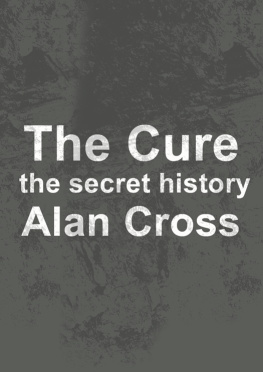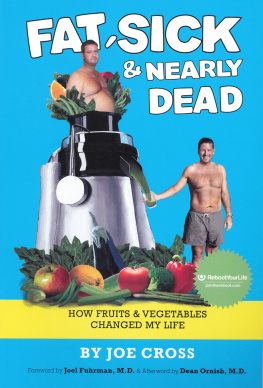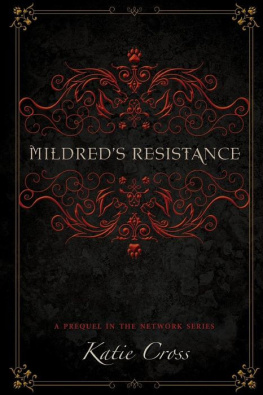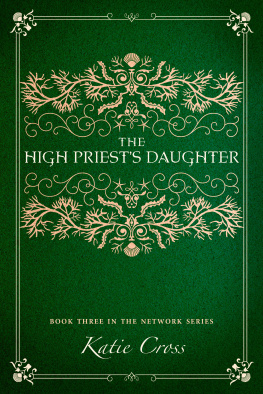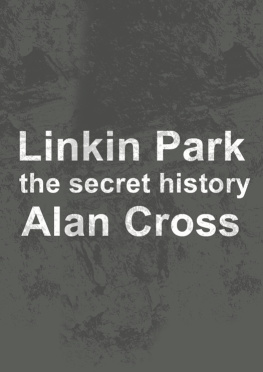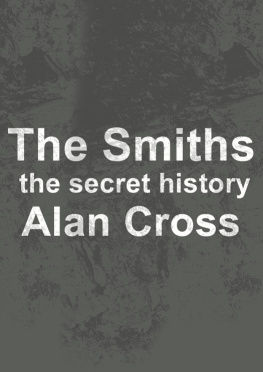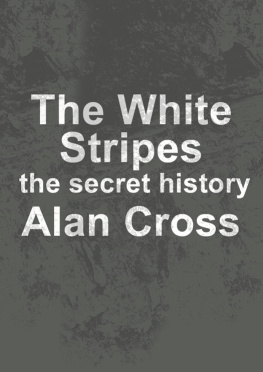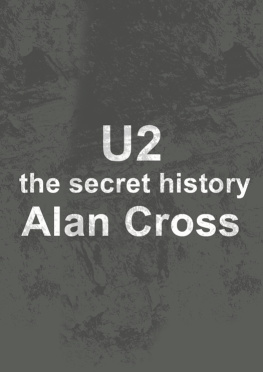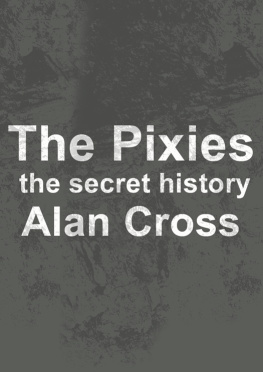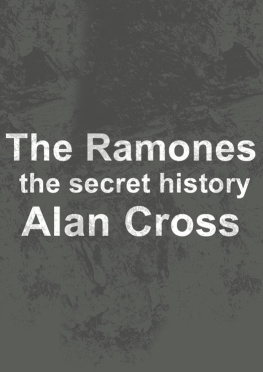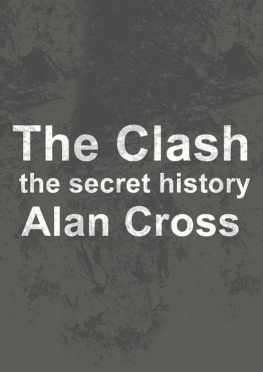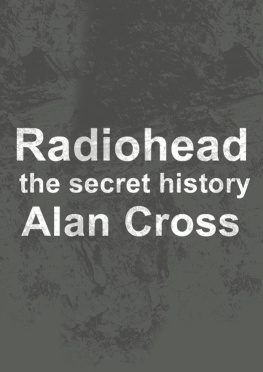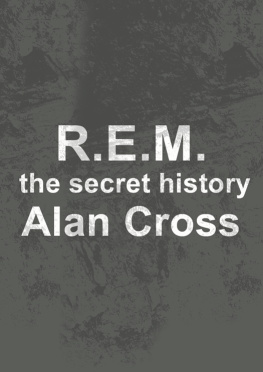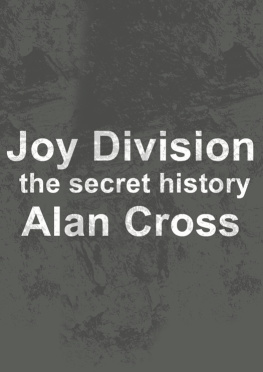Cross - The Cure: the secret history
Here you can read online Cross - The Cure: the secret history full text of the book (entire story) in english for free. Download pdf and epub, get meaning, cover and reviews about this ebook. City: London;Great Britain, year: 2011, publisher: HarperCollins Canada, genre: Non-fiction. Description of the work, (preface) as well as reviews are available. Best literature library LitArk.com created for fans of good reading and offers a wide selection of genres:
Romance novel
Science fiction
Adventure
Detective
Science
History
Home and family
Prose
Art
Politics
Computer
Non-fiction
Religion
Business
Children
Humor
Choose a favorite category and find really read worthwhile books. Enjoy immersion in the world of imagination, feel the emotions of the characters or learn something new for yourself, make an fascinating discovery.
- Book:The Cure: the secret history
- Author:
- Publisher:HarperCollins Canada
- Genre:
- Year:2011
- City:London;Great Britain
- Rating:4 / 5
- Favourites:Add to favourites
- Your mark:
- 80
- 1
- 2
- 3
- 4
- 5
The Cure: the secret history: summary, description and annotation
We offer to read an annotation, description, summary or preface (depends on what the author of the book "The Cure: the secret history" wrote himself). If you haven't found the necessary information about the book — write in the comments, we will try to find it.
The Cure: the secret history — read online for free the complete book (whole text) full work
Below is the text of the book, divided by pages. System saving the place of the last page read, allows you to conveniently read the book "The Cure: the secret history" online for free, without having to search again every time where you left off. Put a bookmark, and you can go to the page where you finished reading at any time.
Font size:
Interval:
Bookmark:
The first thing newcomers notice is the Hair: one of the most famous haircuts in all of music. Even so, Robert Smith may appear a most unlikely candidate for superstardom; in fact, a 1993 cover story on the Cure in Q magazine ran with the headline How Did This Get to Be a Superstar?
Outward appearances aside, this much is undisputed: Robert Smith has steered the career of the Cure for better than two decades, creating one of the worlds most successful doom-and-gloom outfits. As a result of Smiths unrelenting, eclectic and highly romanticized vision of what the Cure should be, the band has sold more than 25 million albums. And despite the occasional protestation from Smith (Were not goths!), the band has had a lasting effect on alt-rock, especially with the black-clad eyeliner and lipstick crowdincluding a significant portion of the goth community. With songs that often obsessed on mournful things, the Cure found an audience desperate for a way to express their feelings of futility, purposelessness and alienation. In the Cure, they found an expression of those feelings, validating the way they looked at the world and thereby offering some measure of comfort. As they say, misery loves company.
While the Cure is known mostly for gloomy and sometimes morbid songs that focus on the absurdities of the universe (theyve been called the messiahs of melancholy, among other things), Smith has been known to write some dandy pop songs, all featuring thin, tinny guitars, synth-pop embellishments and, of course, his trademark quirky vocal style. This combination of light and dark has made the Cure one of the most influential bands in the post-punk world.
The roots of the band can be traced back to Christmas Day 1972, when Smith found his first guitar under the tree. Within a couple of yearshaving learned a few basic chords from his older brother, Richardhe was writing songs with Laurence Lol Tolhurst (born February 3, 1959), a friend he had met on a school bus back in 1964. A particularly precocious child, Smith did not respond well to authority nor did he have any intention of fitting in with the other kids. A prime example might be the time he wore a black velvet dress to school on a dare; he was then promptly beaten up by four classmates.
Music soon became a way to avoid school. When he was 14, Smith formed his first banddubbed the Crawley Goat bandwith his brother Richard, his sister Janet and a few friends from the neighborhood. This was followed by an outfit simply known as the Group because they were the only rock band at the school; a name wasnt necessary. Starting in January 1976, a series of groups came and went: The Obelisks (Horrible, says Smith), Malice (mid-to-late 1976; they even had a gig at a local church posing as a folk group) and finally, the Easy Cure (January 1977), who took their name from a song Tolhurst had written. Meanwhile, Smith found himself expelled from school for being a malignant influence on the other children. Much of his newfound free time was spent brewing his own beer at home.
During this year-long metamorphosis, a parade of would-be pop stars came and went: Richard and Janet Smith, Alan Hill, the Ceccagno brothers, a drummer named Graham. But by January 1977, things had settled down somewhat. The lineup featured Smith, Tolhurst, a former waiter at Gatwick Airport named Porl Thompson and a singer named Peter OToole. Inspired by the growing punk movement, the Easy Cure enteredand wona songwriting contest sponsored by Ariola-Hansa in the summer of 1977. Things became complicated, however, when OToole quit to work in a kibbutz in Israel.
With more gigs and some demo sessions coming up, decisive action was needed. From the beginning, Smith had been the undisputed leader of the group, directing rehearsals, defining musical direction and writing the majority of original material. Once OToole left, Smith decided that he would have to assume the role of lead vocalist. It was a simple case of if you want something done right, then do it yourself.
Smith was appalled. Refusing to be remade into something they werent, the group parted company with Hansa. There were two more changes in the spring of 1978. The first came when guitarist Porl Thompson quit; the second was when the bands name was simplified to just the Cure in early May.
Now working as a trioSmith, Lol Tolhurst and Michael Dempsey (born November 29, 1958)the Cure recorded a four-song demo on May 27, 1978, and circulated the results among a number of record companies. After some discussion, the group became the first signing of Fiction, a new label set up by Polydor A&R man Chris Parry. Within six months, a new recording of Killing an Arab (the bands first single, officially released on December 22, 1978) was being played on the BBCs John Peel Show.
The UK was still gripped by the impact of the oil embargo of the early 70s and alarmed by sheiks buying up swaths of British real estate with buckets of petro-dollars; xenophobia was running high. Killing an Arab was misconstrued as racist hate propaganda, and various Arab groups claimed to have been defamed. Meanwhile, scuffles began to break out whenever the Cure played the song live, thanks mainly to intrusions by members of the ultra-right National Front. Naturally, the track was banned by the BBC. The outcry was so fierce that Fiction deleted the single just 10 weeks after it was released.
Undeterred, the band began work on their debut album and released Three Imaginary Boys on May 5, 1979. Although the group was initially disappointed with the production, most critics seemed to appreciate the Cures thin, minimalist sound, which stood in sharp contrast to the noise of punk and the pop of new wave. The first single, Boys Dont Cry, featuring what would soon become known as Smiths trademark economical guitar stylings, also received good reviews but, surprisingly, didnt even crack the top 100 on the British charts.
By the summer of 1979, Robert Smith was beginning to demonstrate a strong penchant for makeup and outrageously teased jet-black hair. This, perhaps more than anything, attracted the attention of Steve Severin of Siouxsie and the Banshees, who offered Smith a part-time job as the Banshees guitarist (two Banshees had suddenly quit, leaving the band in the lurch). He accepted, playing in both bands for the duration of a British tour.
Once the tour wrapped up in November, Smith had to face a lineup change in his own band. Michael Dempsey had quit, saying that he felt uncomfortable in the background and wasnt allowed as much input into the Cure as he would have liked. Once he left to join the Associates, he was replaced by Simon Gallup (born June 1, 1960), an old friend from a Surrey band called Lockjaw. In addition to Gallup, Smith hired Mathieu Hartley (born February 4, 1960), an ex-hairdresser and keyboard player from a group called the Magpies. This new lineup made its debut at Erics in Liverpool on November 16, 1979.
Much of the winter of 197980 was spent on the road as the Cures cult following continued to build. After spending a few weeks in the studio in the spring, the groups second album, 17 Seconds, was released on April 26, 1980, eventually peaking at number 20 on the UK charts. The extracted single, A Forest (released in late March) crept up to number 31. More touring followed (Europe, North America, New Zealand, Australia) after which Hartley quit, reducing the group to a trio once again (Smith, Tolhurst and Gallup).
The Cures grueling pace continued through the fall and winter of 1980. In the space of just a couple of months, there were rehearsals for the third album, a round of recording demos (which were ultimately scrapped), a virtually sold-out trip through Scandinavia and another spin through the UK. By February 1981, the Cure were back in the studio, working on
Font size:
Interval:
Bookmark:
Similar books «The Cure: the secret history»
Look at similar books to The Cure: the secret history. We have selected literature similar in name and meaning in the hope of providing readers with more options to find new, interesting, not yet read works.
Discussion, reviews of the book The Cure: the secret history and just readers' own opinions. Leave your comments, write what you think about the work, its meaning or the main characters. Specify what exactly you liked and what you didn't like, and why you think so.

